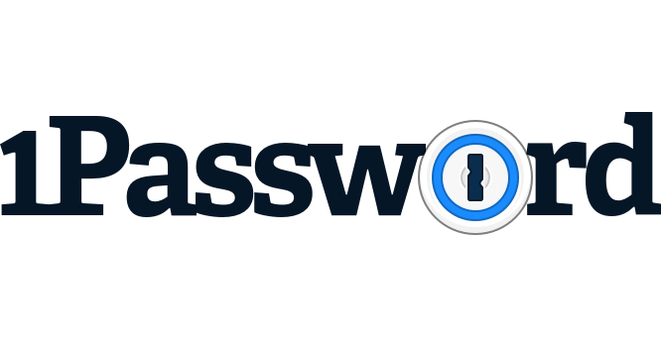In the realm of simulating threats, our scrutiny of the 1Password pentest endeavor not only underscores the challenges but also unveils the robust fortifications surrounding user data.
If you’re looking for some common encryption algo’s found on a network pentest, they’re in my post – here.
By investing a total of $30,720 USD, we sought to mirror the threat landscape for users whose 1Password data might be compromised from their devices, excluding data protected by the Secret Key on our servers.
To distill the findings further, the cost analysis reveals a nuanced perspective. It takes approximately $6 USD for every 2³² (4.3 billion) attempts to crack a 1Password account password. The statistical reality that an attacker, on average, only needs to attempt half of all possible passwords serves as a testament to the efficacy of 1Password‘s security measures. Without the provision of hints, the cost for attackers to crack the three-word passwords in our challenge would have amounted to $4,300 USD.

This calculated cost of $6 USD per 2³² guesses provides a foundational understanding to extrapolate the cracking costs for passwords of varying strengths. For example, a four-word password generated by the 1Password password generator would incur a cost of about $76 million USD to crack. Elevating the complexity by incorporating random capitalization and numeric separators would escalate the cost to approximately $100 billion USD.
| Password Complexity | Bits | Cracking Cost (USD) | Example |
|---|---|---|---|
| 3-word, constant separator | 42.45 | 4,200 | prithee-insured-buoyant |
| 8-char, uppercase, lowercase, digits | 45.62 | 38,000 | 8NhJqHPY |
| 3-word, digit separator | 48.06 | 200,000 | swatch2forte1dill |
| 9-char, uppercase, lowercase, digits | 51.51 | 2,200,000 | siFc96vGw |
| 4-word, constant separator | 56.60 | 76,000,000 | align-caught-boycott-delete |
| 10-char, uppercase, lowercase, digits | 57.37 | 130,000,000 | rmrgKDAyeY |
| 4-word, constant separator, capitalize one | 58.60 | 310,000,000 | purdue-fondue-mull-SAUL |
| 4-word, digit separator, capitalize one | 67.02 | 100 billion | thesis7wizen9eclipse2BOATMEN |
| 12-char, uppercase, lowercase | 67.02 | 100 billion | fFgJxymYEsJak |
| 5-word, constant separator | 70.75 | 1.4 trillion | passion-ken-omit-verso-tortoise |
| 5 words, constant separator, capitalize one | 73.07 | 6.9 trillion | lady-chaise-PRISONER-mae-pocosin |
| Smart password | 84.20 | 16 quadrillion | kqh*jtg!vzk8CPR4zfe |
| 6-word, digit separator | 78.00 | 27 trillion | azure-dancer6solace5tempest4blessing |
| 7-char, uppercase, lowercase, digits, symbols | 88.00 | 270 quadrillion | Xp#l9Nz |
| 6-word, constant separator, capitalize one | 89.13 | 2.5 quadrillion | bliss-mountain-buffalo-divine-halo-TALON |
| 14-char, uppercase, lowercase, digits | 92.38 | 45 quadrillion | RbE7y4M3kL1zZ6oG |
| 7-word, digit separator, capitalize one | 98.50 | 1 sextillion | rapture6spell7blitz4impel5echo8hubris |
| 16-char, uppercase, lowercase | 105.20 | 430 sextillion | PqD4xZgU7sH1yJ6w |
Crucially, it’s paramount to acknowledge that the contest employed 100,000 rounds of PBKDF2-H256 for processing account passwords. However, this method of protection should not be assumed for passwords used elsewhere, emphasizing the need for a holistic approach to password security in diverse scenarios.
Insight into Prize and Time Dynamics:
Acknowledging the initial underestimation of effort and prize money, the contest unfolded as a testament to the resilience of 1Password account passwords. Doubling the initial prize offering twice and extending the contest duration only reinforces the notion that these passwords remain well-protected, even on users’ devices. Importantly, this type of guessing attack is not feasible for data captured from 1Password servers, thanks to encryption with the Secret Key.
While my initial miscalculation led to a more protracted contest, it underscores that achieving good-enough account passwords within human reach is a commendable feat. The additional cost incurred did not impact my salary, paving the way for a future, more technical blog post that could delve into the intricacies of project cost estimation.
User Guidance:
1. Password Usage Limitation:
- Reiterating the importance of using the account password exclusively for the 1Password account, preventing potential vulnerabilities.
2. Strength and Usability Balance:
- Emphasizing the delicate balance between selecting the strongest password while ensuring it remains practical for daily use across multiple devices.
3. Preference for Randomly Generated Passwords:
- Encouraging users to leverage the 1Password password generator for stronger, randomly created passwords, known for their resilience against attacks.
4. Ensure a Backup:
- Reminding users to print and store a paper copy of their Emergency Kit in a secure place, ensuring easy account recovery if needed.
Cost vs. Time Dynamics:
1. Setting a Price on Cracking Account Passwords:
- Delving deeper into the concept of expressing the effort to crack passwords in terms of cost, shedding light on the intricacies of the endeavor.
2. Cracking Cost Metrics:
- Expanding on the cracking cost metrics, the table offers a detailed breakdown for various password generation schemes, aligning with the 1Password generator settings.
This comprehensive guidance empowers users to make informed choices aligned with their unique needs, habits, and use cases, ensuring a robust approach to password security within the 1Password ecosystem.

External Attack Vectors: The LastPass Breach:
The landscape of password security is marked by incidents that serve as cautionary tales. The notable LastPass breach underscores the vulnerabilities that can emerge when external threats target password management systems. The breach exemplifies the potential attack vectors that could be exploited if not prevented through meticulous network pentests. The LastPass incident serves as a stark reminder that without adequate safeguards, external adversaries can exploit vulnerabilities, highlighting the imperative for continuous network pentesting efforts.
In the context of network pentests, where the focus is on fortifying cybersecurity measures within internal environments, preventing external attacks becomes a critical priority. The LastPass breach, while distinct in nature, emphasizes the need for organizations and individuals alike to adopt proactive measures. Employing network pentests as part of a comprehensive cybersecurity strategy becomes paramount, ensuring the identification and mitigation of potential external attack vectors.
The term network pentest encapsulates the systematic examination of internal networks, assessing vulnerabilities, and fortifying defenses against potential threats. Employing this proactive approach, ideally on a regular basis, becomes crucial in the aftermath of incidents like the LastPass breach. It serves as a preventive measure, ensuring that external attack vectors are diligently addressed, fortifying the overall security posture of password management systems.
In conclusion, the insights gleaned from the 1Password pentest underscore the resilience of account passwords within the 1Password ecosystem. However, the broader cybersecurity landscape, exemplified by incidents like the LastPass breach, necessitates a holistic approach. Network pentests emerge as a powerful tool to fortify defenses against potential external attack vectors, safeguarding password management systems and user data from sophisticated adversaries. Regular assessments and proactive measures remain pivotal in the ever-evolving landscape of cybersecurity.
I
Leave a Reply